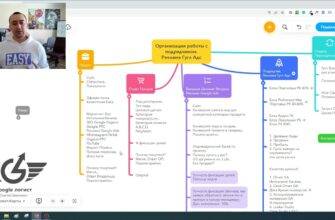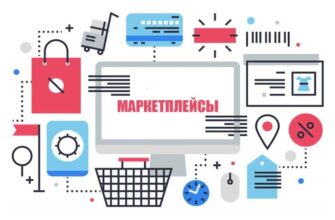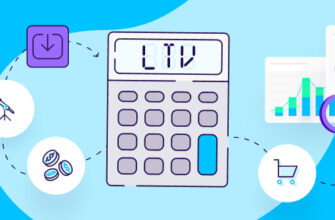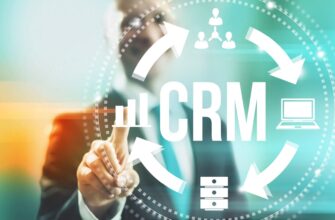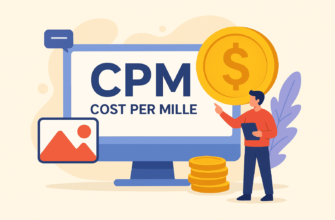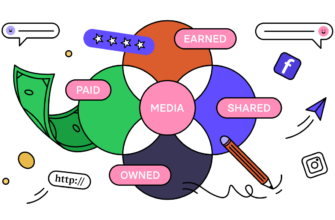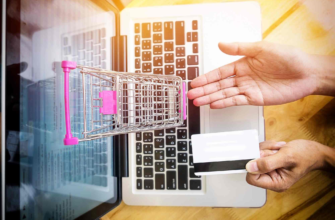- What is omnichannel marketing?
- How does omnichannel marketing work?
- How does omnichannel marketing differ from multichannel marketing?
- What are the advantages of an omnichannel strategy?
- Improved quality of service
- Individual approach
- Time saving
- The effect of advertising is amplified
- How to implement an omnichannel approach in marketing?
Today, it’s not enough for businesses to utilize only one sales channel to have a meaningful presence in the marketplace. Research shows that 86% of shoppers regularly use multiple channels when shopping – from desktop to smartphone, from websites and mailing lists to mobile apps. The proportion of those who buy only online or only offline is steadily declining.
This presents businesses with new challenges. To retain customers and increase their loyalty, you need to provide a seamless user experience across all brand touchpoints. You need to be available to the customer where and when it suits them – in the offline store, on popular marketplaces, in social networks and apps. Omnichannel marketing helps to realize all this.
What is omnichannel marketing?
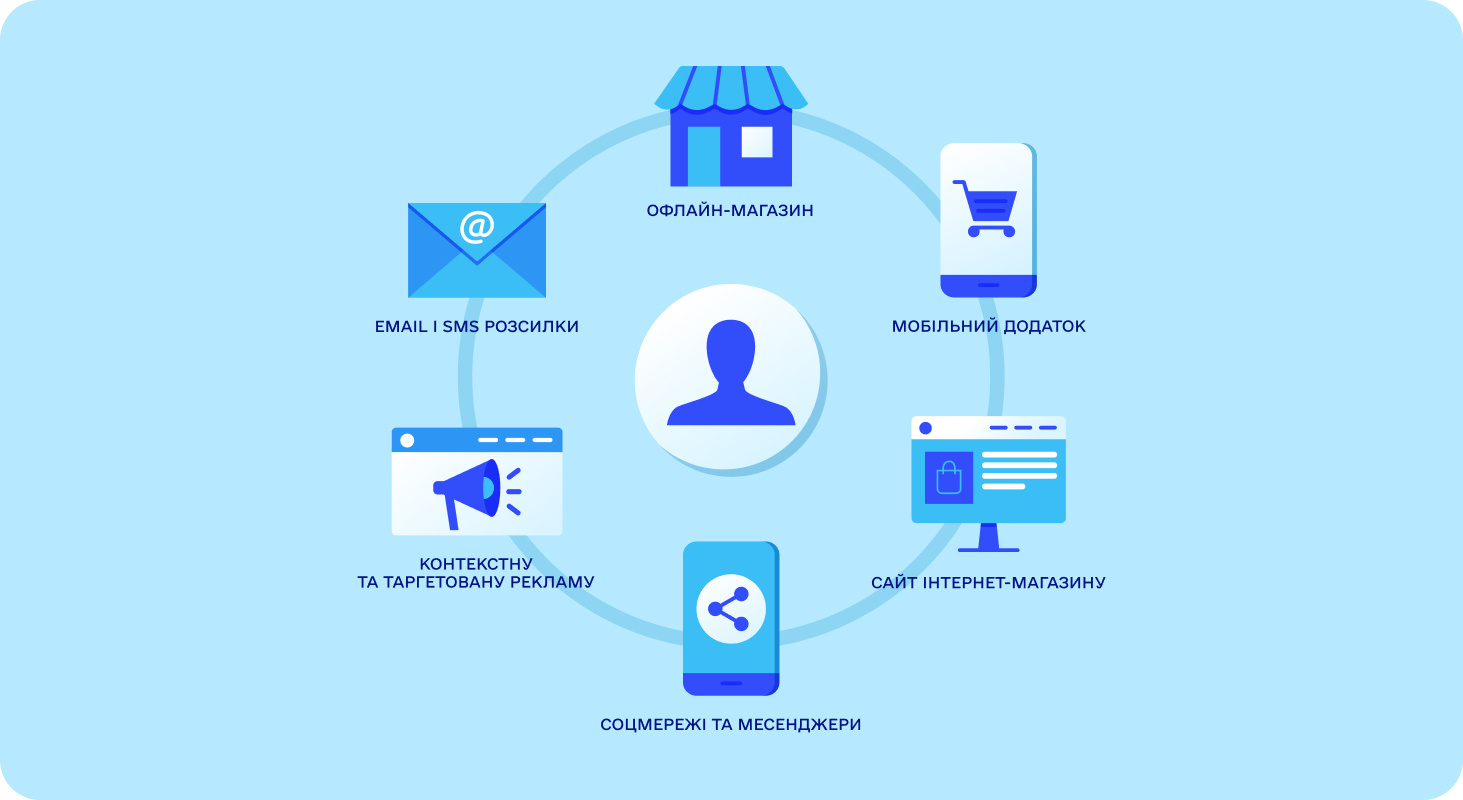
How many calls and sales will I get by ordering contextual advertising from you?
I need to calculate the conversion of my website Describe
the task
in the application
Calculate potential ad revenue Google
contextual advertising calculator
The word “omnichannel” literally means “omnichannel” in English. The goal of this approach is to provide customers with a seamless and personalized experience at every stage of their contact with your advertising – from choosing products on the website to making payment, receiving and using the product.
The development of omnichannel is largely driven by the concept of Unified Commerce. Its essence is that all processes are integrated and subordinated to a single goal – to provide the customer with the best experience of interaction with the brand.
Omnichannel marketing is, accordingly, a brand promotion methodology that involves the synergy of all available online and offline channels. Modern technologies – CRM systems, marketing platforms, analytics systems – help to achieve this integration. But the main thing is to establish end-to-end business processes and communications between the company’s departments. After all, omnichannel begins inside the organization.
The very development of the omnichannel approach is largely due to the changing portrait of the modern consumer. First of all, we are talking about Generation Z – people who have grown up in the age of the Internet and digital technologies. They are used to getting everything here and now, literally in a couple of clicks on a smartphone.
For Generation Z, the process of selection, purchase and delivery should be as simple and fast as possible. They won’t waste time searching for information and comparing prices in different stores. They want a seamless experience where they can find the product they want, order and pay for it in one place.
In addition, zoomers expect a personalized experience. A brand should not just sell them things, but anticipate their desires, give relevant recommendations, offer favorable bonuses. This is why you need to collect information about each customer and create their digital profile.
The role of personalization will only grow in the future. Experts predict that thanks to the Internet of Things and artificial intelligence, companies will be able to automatically recognize customer needs and offer personalized solutions. For example, a smart refrigerator will itself order products based on the owner’s preferences.
How does omnichannel marketing work?
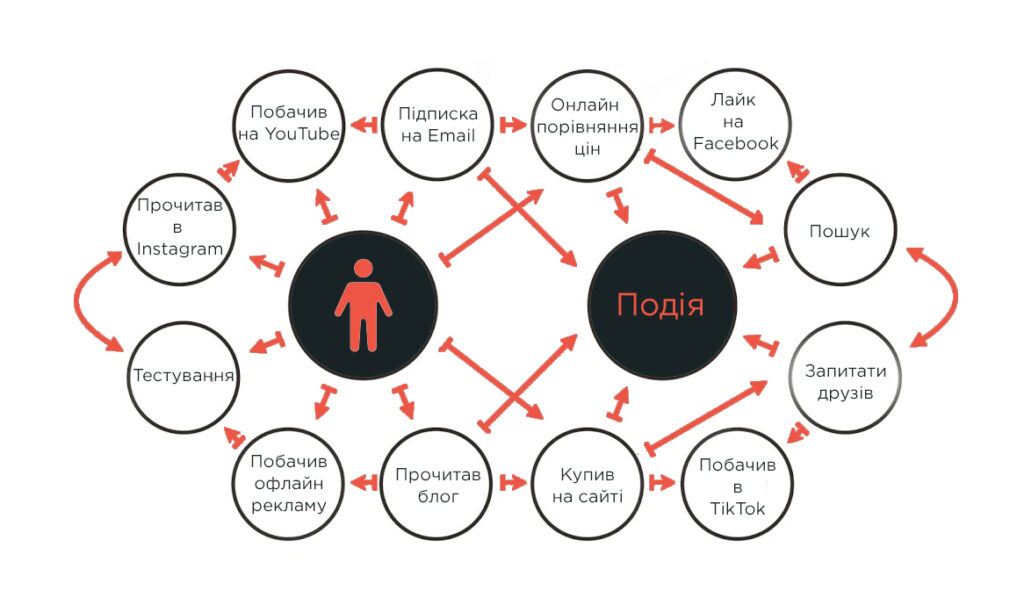
Let’s consider the principle of omnichannel marketing on an example. Let’s say a user has seen an advertisement for your online sportswear store in social networks. He can go straight to messenger and order a T-shirt or sneakers in a chatbot. Or first go to the site, look at the assortment, and then contact a manager to clarify the details.
If a potential customer has put something in the cart but has not placed an order, you can remind him about it by email or in a web push notification. And after the purchase, you can recommend related products based on their preferences.
At the same time, the customer can choose any convenient way to receive the order – home delivery, self-collection from a pickup point or from an offline store. The main thing is that at all stages, information about their requests and actions should be stored and transmitted between channels.
How does omnichannel marketing differ from multichannel marketing?
At first glance, it may seem that omnichannel and multichannel marketing are the same thing. After all, both approaches use several channels to interact with the audience – email, social networks, messengers, website, mobile application, etc. But there is a fundamental difference.

Multichannel marketing works with each channel separately. Email marketing has its own strategy, targeted advertising has its own strategy, and SMS has its own strategy. These channels are not connected in any way and can broadcast different and sometimes contradictory messages.
For example, a client receives an email about a 10% discount on a new collection. A couple of days later, he receives an SMS about a sale with discounts of up to 50%. Going to the website, he finds neither offer and closes the tab in confusion.
In a multichannel approach, such situations are inevitable, because the same customer in each channel is perceived as a new one. Its history of interaction with the brand is not tracked or transferred between channels. Hence the inconsistency of communications.
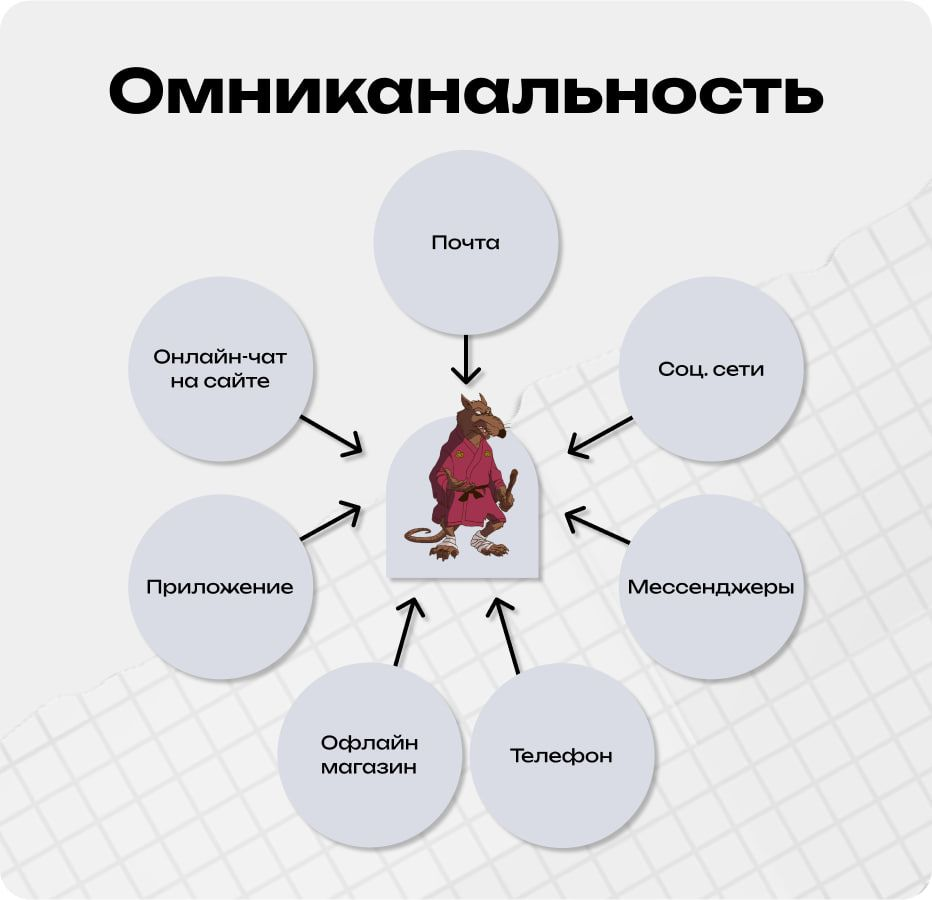
Omnichannel marketing works differently. Its main principle is that everything is subordinated to the interests of the customer, not the channel. User data is collected into a single profile and is available at any point of contact with the brand. Therefore, the customer receives a consistent and personalized experience at all stages of the sales funnel.
Let’s say a person has put a product in the cart, but has not placed an order. Going to the mobile application, he will see a reminder of this and a coupon for a discount. And if he calls the call center, the operator will know the entire history of interactions and will be able to help with the purchase.
Parameter | Omnichannel marketing | Multichannel marketing |
Personalization | In-depth. The interaction history and preferences of each customer are taken into account. Offers are tailored to the specific user in channels that are convenient for them. | Weak or absent. Frequent use of mass mailings with minimal segmentation. Emphasis on broad reach rather than individualized approach. |
Focus | Customer-centricity. The goal is to understand the needs and behaviors of the customer in order to build a long-term relationship with them. | Product orientation. The main thing is to promote the product or service, to tell about its advantages and benefits. |
Channel consistency | High. Channels are integrated with each other, customer data is transferred from one point of contact to another. Communications are logical and consistent. | Low. Each channel works in isolation, interaction history is lost during transition. Messages may be duplicated or contradict each other. |
Implementation timeframe | Longer than multichannel marketing. It takes time to integrate systems and set up processes. But the effect is more long-term due to customer loyalty. | Shorter than the omnichannel approach. You can launch campaigns in different channels faster. But they will be aimed at one-off sales rather than long-term relationship building. |
Budgets | Higher because of the need for a dedicated platform to collect and analyze customer data. Advanced IT solutions and highly qualified specialists are required. | Lower, as deep analytics and channel integration are not required. The main expenses are payment for advertising platforms and the work of marketers. |
The omnichannel approach is more difficult to implement. It requires more in-depth analytics and system integration, but it yields better results. Companies with an omnichannel promotion strategy on average make 10% more profit than their competitors.
How many calls and sales will I get by ordering contextual advertising from you?
I need to calculate the conversion of my website Describe
the task
in the application
Calculate potential ad revenue Google
contextual advertising calculator
What are the advantages of an omnichannel strategy?
The development of digital technologies and online commerce has fundamentally transformed the field of marketing. But if you analyze deeper, it becomes obvious that the omnichannel approach is not just changing marketing strategies – it is taking the entire e-commerce industry to a new level due to its many obvious advantages.
Improved quality of service
The omnichannel approach allows us to provide customers with a high level of service regardless of the chosen communication channel. A customer can start communicating with a brand in social networks, continue on the website and finish in messenger, receiving up-to-date information and quick responses at every stage.
Thanks to this, the company can more effectively solve customer problems and provide them with the necessary data in an optimal way. For example, by connecting a chatbot in a popular messenger, the business gives customers the opportunity to clarify product details or get answers to typical questions at any time.
Individual approach
Omnichannel puts the customer and their wishes at the center. People respond better to brands that are attentive to their concerns. Audience trust is also strengthened by a consistent visual design and communication style across all channels. As a result, customers recognize and remember these companies more quickly and show greater loyalty.
The collection and analysis of information is critical for a personalized approach. Every user action is captured in real time and fed into a single database. This allows you to show customers relevant ads and send offers at all stages of interaction.
So if a person has already bought a smartphone, you should not show him any more ads for this product – they will be inappropriate and annoying. But it makes sense to offer related products – a case or glass on the screen. This way you will regain the buyer’s interest and possibly make a repeat sale.
Time saving
This strategy saves time and effort for both customers and your employees. Customers don’t have to spend a lot of time searching for information about availability and cost of goods. And a business doesn’t have to spend money on attracting the audience it is already working with.
For example, a customer has placed an order, and 2 weeks later wants to return the goods. If you can fill out a form for a refund and detailed instructions on the site, the buyer will not have to contact support. He will be able to issue the refund on his own: send the application, receive an email confirmation, and the next day – an SMS about the refund deadline.
The effect of advertising is amplified
Omnichannel marketing combines customer data from different sources to make ads more personalized. Combined with ease of communication, it simplifies the path to purchase. Satisfied customers become loyal customers and bring the company steady revenue.
A well-thought-out strategy also helps to set up optimal advertising formats for each channel. This increases the effectiveness of promotion and allows budgets to be allocated more efficiently. All channels work together for a single purpose within the framework of a common marketing concept.
For example, when a person makes the first contact through search, he sees general information about the product. Then remarketing shows him the items he was interested in on the site. Social networks offer him discounts and installments, and YouTube shows him videos with instructions on how to use the product.
By analyzing detailed customer journey data, a business can optimize the number of interaction points before a purchase. This speeds up the cycle of selling and receiving transactions. As the company has better control over the sales funnel, it can also automate some processes, such as handling customer service requests.
How to implement an omnichannel approach in marketing?
- Identify your CA. To provide customers with the best experience, you need to understand who they are and what they want. Build a detailed portrait of your customer, taking into account their gender, age, interests, and behavior. This will help you more accurately select content and appropriate communication channels.
- Choose the optimal promotion channels. Omnichannel implies many points of contact, but you should not use them all in a row. Focus on those that are popular with your audience. For example, there is little point in promoting a Facebook group if your clients are mostly zoomers. Better pay attention to TikTok.
- Form a sales funnel. Visualize the customer’s journey from the first acquaintance with the brand to purchase. Divide this path into main stages in the form of a funnel. This way you can guide the buyer from stage to stage, providing the right information at the right time.
- Combine channels in a single control center. The approach only works if all channels are integrated and synchronized. Data about each customer and their communications with the brand should be collected in a single database. The best option is to set up a CRM system with shared access for online and offline teams.
- Create a unified marketing strategy. Formulate key principles of positioning, corporate identity. These should be followed in all channels so that communication with the audience is recognizable, regardless of the channel.
- Set up customer data collection. Omnichannel marketing requires constant recording of customer interactions with the store. To do this, you need to track important events – for example, what products a person puts in their shopping cart. Google Analytics, Facebook Pixel and other web analytics tools can help here.
- Analyze statistics and user behavior. Analytical data will tell you how to improve the work of promotion channels and what new solutions to implement to attract an audience. Once you have detailed statistics, you can evaluate by numbers the effectiveness of each channel and the reaction of customers to your actions.



